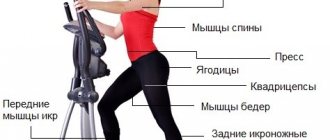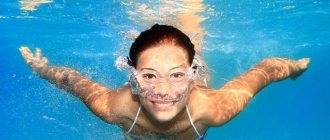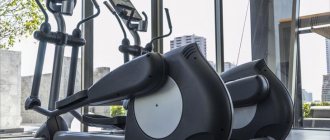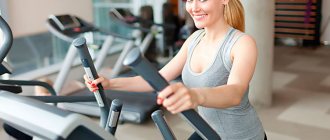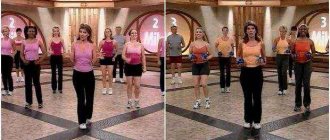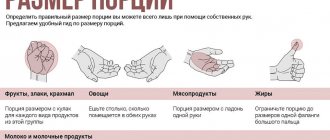In the world of sports and fitness, there are many techniques, each of which has a specific focus. Some are designed for gaining muscle mass, others for weight loss, and others are designed to improve health and have a minor effect on body composition. Plyometric exercises are a unique complex that allows you to simultaneously increase muscle strength, overall endurance and burn the maximum amount of fat. Let's find out what plyometrics is, what its basic principles are, and analyze in detail the advantages and disadvantages. At the end of the article, an approximate training complex and a table will be given that will help you independently create a plyometric training plan, taking into account your level of physical fitness.
What is plyometrics
Plyometrics involves a training method in which, over a short period of training, physical indicators such as endurance, explosive strength, and speed are developed.
Most often, plyometric training consists of jumping - this includes jumping rope, and exercises with your own weight in place, long jumps, high jumps and elevated jumps. But the complexes also contain exercises that develop strength and power, for example, sprints, push-ups with clap, pull-ups, that is, those where explosive strength is needed.
Plyometrics is based on the constant contraction and relaxation of muscles, and the faster the phases replace each other, the more effective the training.
Thus, the speed of performing exercises is the main condition for training.
The load and rest between exercises can vary, for example, you can train according to the following schemes:
- 20 seconds of load, 10 seconds of rest, and so on for several rounds.
- 30 seconds of load and 15 seconds of rest.
- 20 seconds of load and 20 seconds of rest and the like.
Disadvantages of Plyometric Training
If you are an experienced athlete, the stress that plyometric exercises place on your body will not be enough to see significant progress in your form or performance. Not because plyometrics are easy, but because they predominantly use slow-twitch muscle fibers (SMT), which are difficult to hypertrophy and are poorly involved in classical strength work for 8-12 repetitions. However, developed MMVs will help you perform exercises at a faster speed and perform more repetitions, which will benefit your overall progress.
Also, many athletes complain about a rather limited arsenal of exercises. This is understandable: training in the gym makes it possible to load each muscle group from different angles; in plyometric training we can only choose between different variations of push-ups, squats, pull-ups and jumps. It's effective, but too monotonous.
Increasing the load in plyometrics is quite difficult and it is generally unclear what criteria should be used here. Which is better for your body: 20 push-ups with a clap or 10 push-ups with two clap?
This style of training is not suitable for beginners if their goal is to quickly gain muscle mass. Plyometrics generally have little correlation with bodybuilding and fitness. Rather, it is one of the methods for developing the functional capabilities of the body. You are working to become faster, stronger and more resilient. If these parameters are developed to a certain level, any further goals will be much easier for you, be it increasing strength or muscle growth.
Who is plyometric training suitable for?
- First of all, plyometrics are only suitable for healthy individuals who do not suffer from cardiovascular diseases, musculoskeletal disorders, diseases of the joints and spine, since the training is based on shock and explosive loads.
- For those who want to get rid of excess fat . Because training develops endurance, improving the cardiovascular system. Therefore, you can not only lose weight, but also become more cheerful and energetic.
- For those who want to develop speed and explosive power . Therefore, the plyometric method can be used in athletics training, martial arts, and team games.
Training option #1
We dilute the entire strength training with plyometric exercises evenly
This option involves working your muscles using the split method: you do the first exercise with weight, for example, lunges with a barbell on your shoulders ; and the second exercise is plyometric, for example, jumping squats . You do 3-4 such circles, 15 repetitions of each exercise. Next, change the muscle group and do everything according to the same scheme: strength exercise + plyometric exercise.
Lunges with a barbell on the shoulders
Squat with jump up
Benefits of Plyometric Exercises
- Exercise helps in losing weight. Intense training helps you burn a lot of calories. Regular exercise leads to rapid weight loss.
- Exercise helps strengthen all the muscles of the body, even the smallest ones. In addition, explosive strength exercises involve more than one muscle group.
- Plyometrics develops ligament flexibility and joint mobility.
- Such training does not destroy muscle tissue, unlike long-term cardio training.
- This load speeds up your metabolism.
The effectiveness of this program
Plyometric exercises are a great addition to any sport. If you alternate them with going to the gym or morning jogging, positive dynamics in changes in body composition will appear faster.
When using this technique, not only changes occur in muscle fibers, but also in the nervous system - the speed of operation of motor neurons increases. Plyometric training primes muscle fibers and the central nervous system to produce the fastest, most powerful force possible in a short period of time.
If you include plyometric exercises in your training plan, strength endurance develops and working with heavy weights becomes more effective. Such training helps overcome the plateau effect in weight loss and stagnation in muscle mass gain.
Harm and contraindications
What harm can plyometrics cause:
- When jumping shock loads, the spine and joints suffer, therefore, if there are any inflammations or diseases of the musculoskeletal system, such loads are prohibited.
- The exercise technique does not provide for stability of movements and concentration, so there is a high risk of serious injury.
- High-intensity exercise increases your heart rate, so excessive heart rate can negatively impact your heart health.
Plyometrics are contraindicated for:
- Any diseases of the cardiorespiratory system.
- Diseases of the musculoskeletal system - bones, joints.
- Obesity.
- Insufficient level of physical fitness.
Training option #2
Plyometrics at the end of the workout
The first training option is quite difficult, it is suitable for already prepared girls who have come to the gym not for the first time and are already at least a little familiar with plyometric training . The second option is suitable for beginners and those who are just getting acquainted with plyometrics. Here you do classic strength training in the gym, and at the end you choose, for example, two plyometric exercises (jumping), which you do for 15 repetitions, 4-5 circles. Do the exercises one after another without a break (this will be one block), after which rest for 10-15 seconds and repeat this block again. And repeat this at least 4 times. In this way, you will achieve trained muscles and greatly speed up your metabolism for several more hours.
For example:
1st exercise – jump lunge
2nd exercise – burpee
1 circle:
- jump lunge – 15 times
- burpees – 15 times
Rest – 10-15 seconds
2nd circle:
- jump lunge – 15 times
- burpees – 15 times
Rest – 10-15 seconds
3 circle
- jump lunge – 15 times
- burpees – 15 times
Rest – 10-15 seconds
4 circle
- jump lunge – 15 times
- burpees – 15 times
Rest
I showed you only two options for training in the gym with elements of plyometrics, but you can come up with your own version and use your own exercises. There is nothing better in the training process than a variety of exercises and new training methods.
Now let's look at the types of plyometric exercises and an example of plyometric training at home .
Sets of plyometric exercises
Before starting each complex, you need to warm up for 5-7 minutes.
The technique for performing each exercise is described under the complexes.
First level
Each exercise is performed 8 cycles according to the following scheme: 20 seconds of load, 10 seconds of rest - this is 1 cycle. After cycle 8, rest for 2 minutes, then move on to the next exercise. And so the whole list.
- Burpee.
- Jumpin Jacks.
- High knee lift.
- Plank running.
- Jumping to higher ground.
- Jump squats.
Average level
Each exercise is performed alternately for 30 seconds, with a rest period of 15 seconds between them. The complex is performed in 3-4 circles. After each circuit, rest for no more than 2 minutes.
- Aerial lunges.
- Jump squats.
- Burpee.
- Jumping with legs spread in the plank.
- Plank jumps forward and backward.
- Running with knees raised.
- Running in table position.
Advanced level
Each circle of the complex is performed according to the following scheme:
- first exercise 20 seconds, rest – 20 seconds;
- second exercise – 20 seconds, rest – 20 seconds.
The circle is performed in 4 cycles. Then subsequent circles are performed in the same way. After completing four cycles, each pair rests for 2 minutes.
- Circle 1: running with knee lifts + aerial lunges.
- Circuit 2: burpees + clap push-ups.
- Circle 3: plank jumps + plank run.
- Circuit 4: Jump Squats + Jumping Jumps.
Exercise technique
Burpee
Place your feet hip-width apart, squat down and touch your palms to the floor. Then, as you exhale, jump your feet back. Lie on your stomach and lift your palms and feet off the floor. Place your palms on the floor and, while inhaling, jump back to your feet. Return to the starting position by jumping off the floor, clapping your hands overhead.
Jumpin Jacks
Feet together, arms along the body. Jump with your feet apart while raising your arms out to the sides, clapping your palms overhead. Jump back to the starting position.
Plank running
Standing in a plank position, pull your knees to your chest one at a time, imitating running with high knees.
Jumping to higher ground
Standing in front of a hill, push off the floor and jump onto a bench or pedestal with both feet at the same time. Get down from the pedestal, touching the floor with your feet one at a time.
Jump Squats
Place your feet slightly wider than your pelvis, squat as you inhale and, as you exhale, push off with your feet and jump from the bottom point, then squat again.
Aerial lunges
Lunge back with your right foot, pushing off with your feet, swap your feet as you jump. In this way, change your legs in the air without stopping.
Jumping with leg extensions in plank
Standing in a plank position, place your feet together. Exhale, pushing off with your toes, jump and spread your feet a little further apart, and jump back.
Plank jumps forward and backward
Standing in a plank position, jump your feet toward your palms. Without lifting your palms from the floor, jump back into the plank position.
Running with knee raises
Regular running in place with high knees alternately at a fast pace.
Running in table position
Sitting on your buttocks, place your palms under your shoulders and your feet hip-width apart, bending your knees. Raise your pelvis from the floor and fix the position. Then begin to throw your legs forward one at a time, as if you were running.
Push-ups with cotton
Exercise for advanced. When bending your elbows, almost touching your chest to the floor, make a powerful push with your palms from the floor and come off with a clap. Also rotate your palms to the starting position and do push-ups in the same way.
A short excursion into the history of plyometrics
Plyometrics originally used by professional athletes and athletes to achieve better results in competitions. And you will be very surprised, but it was not the Americans who invented plyometrics, as many probably thought, but Soviet track and field athletes. It was they who used in their training in preparation for competitions the method of jumping exercises, which were studied by Fred Wilt in the 1980s and were soon called in one word - “plyometrics”.
The main point of plyometric exercises is to stimulate the muscle as quickly as possible by three opposite states at once (eccentric contraction, isometric and concentric), in each of which it (the muscle) remains for the minimum possible amount of time.
Isometric contraction is an increase in tension in a muscle without any contraction (a);
Concentric contraction is the shortening of the muscle (c).
Eccentric contraction is the lengthening of a muscle (c);
To understand what type of contraction occurs and when when performing plyometric exercises , let's look at this using the example of platform jumps.
Stage 1
In the initial phase of the exercise, you stand on the floor, then with a sharp movement you push off the floor and jump onto the platform. Here a concentric contraction of the muscles of the thigh and lower leg occurs, i.e. they are shortened .
Stage 2
Then for a moment you stand motionless on the platform - this is an isometric muscle contraction, i.e. the muscles are motionless .
Stage 3
And then you jump down from the platform to the floor, causing an eccentric contraction of the muscles, i.e. their stretching .
It is important to remember that this seemingly easy exercise should be performed as quickly as possible and with the correct technique. Jumping and landing must be completed in 0.1-0.2 seconds, only then can this be called a perfectly executed plyometric exercise.
Plyometric training can be completely different: they can be performed either with your own body weight, or with a small weight of dumbbells, barbells, etc.; they can last 10 minutes, 20, 25 or even 40 minutes; the workout can be built entirely in the style of plyometrics, or maybe some part of it, etc. All these conditions depend on the individual health indicators of a person, as well as on his desires and personal preferences.
By the way, the well-known CrossFit is nothing more than the “brainchild” of plyometrics . Initially, plyometrics did not use additional weights; the training took place with your own body weight, while in CrossFit training it is recommended to use additional weights and weights. But in the modern world of fitness, everything has become so intertwined, one type of training with another, that they also began to use additional weight in plyometrics. This is not scary, but such a workout is already a mix of crossfit with jumping gymnastics.
Plyometrics: hockey and football
As you know, in hockey and football the key indicators are the strength and speed of the leg muscles. Most technical aspects in these sports are achieved through the strength and speed of the legs. A good plyometric training program for hockey and football players:
- plyometric squats - 2 sets of 20 times;
- jumping out of a deep squat - 2 sets of 20 times;
- burpees - 2 sets of 20 reps;
- running at a fast pace.
Very often during hockey and football training you can watch athletes running in the stands of the stadium. Jogging up and down, as well as jumping between rows, are great for developing explosive leg power.
To develop speed in football and hockey, you need to practice shuttle running . Its peculiarity is that at the moment when your speed is maximum, you need to stop sharply and start running in the opposite direction. This perfectly develops your reaction, and the ability to suddenly change direction, which is so important in hockey and football.
In hockey and football there are often situations when it is necessary to play hard with the body. Therefore, it is necessary to develop explosive strength in the upper body. Push-ups and pull-ups with clapping are perfect for this purpose .

